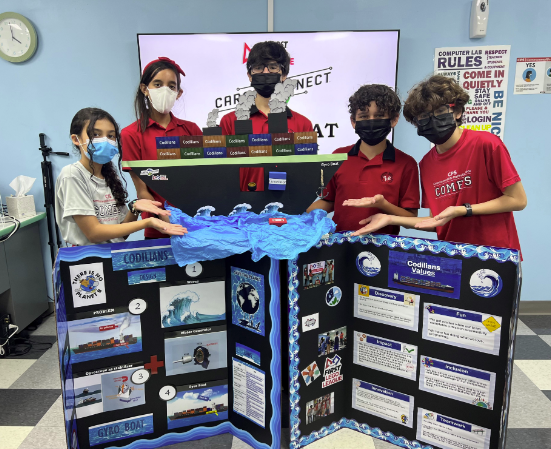As we celebrate the CPS Codillians who represent our island in Brazil this week, we would like to take a deeper dive into each one of this team’s performance in the three key FLL Challenges areas at the Puerto Rico Championship to see what makes up this winning team! Each day we will post about one area of the competition and see some examples of this team in action!
Today we take a look at their Innovation Project:
Every season teams must identify a problem related to the season topic that our communities face and come up with an innovative solution to solve it. Teams are judged based on the quality of their research into the problems in the topic, their research into development and potential implementation of the solution, and their communication of their solution and its potential impact with key stakeholders and the Championship judges.
During the CARGO CONNECT Season, teams investigated problems related to the shipping industry – from manufacturing to delivery. The CPS Codillians really impressed the judges with all aspects of their innovation project – winning them the first place rank in the category! Let’s learn a bit more about this impressive project!
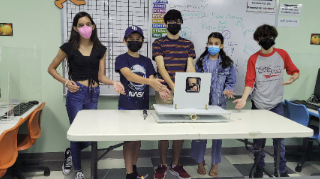
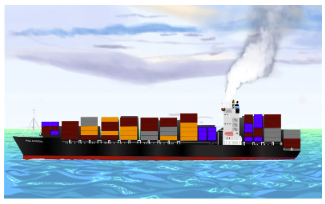
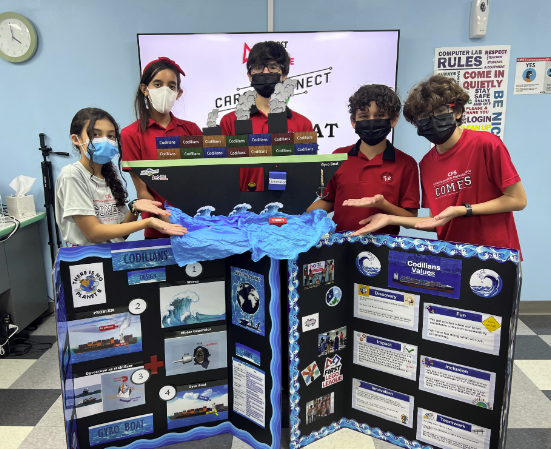
Problem: We live on an island, and we see the importance of cargo ships that transport all the necessary supplies to the island. However, the problem is all these cargo ships are running on diesel fuel that comes from non-renewable resources, and they are contributing to the destruction of the environment and consumption of the non-renewable resources.
Why have we selected this problem? Why is it important?
Cargo ships are part of the problem of environmental deterioration. One big cargo ship emits as much carbon dioxide as 70000 cars. As a team we decided to select this problem because we live in Puerto Rico, and we want to help the environment and create a better place to live for us and future generations to come.
Non-renewable resources are defined by Society as, “N. (2021) as resources that include coal, natural gas, oil, and nuclear energy”. Once these resources are used up, they cannot be replaced, which is a major problem for humanity as we are currently dependent on them to supply most of our energy needs. Non-renewable resources can run out with time and if it does happen it’s important to identify other ways to make things work.
What causes this problem? What consequences does it have? Where does it occur? Who or what does it affect? What dangers exist if we do not solve this problem?
Unlike vehicles and power plants, cargo ships remain conveniently out of sight to most of us. “Nearly all cargo ships use diesel combustion engines to turn the propellers, plus diesel generators that power onboard lighting systems and communications equipment. Many vessels still burn heavy bunker fuel, a viscous, carbon-intensive petroleum product that’s left from the crude oil refining process. As a result, maritime shipping contributes a sizable share—about 2 to 3 percent—of annual carbon dioxide emissions, according to the International Maritime Organization (IMO), the U.N. body that regulates the industry.” (https://spectrum.ieee.org/the-struggle-to-make-dieselguzzling-cargo-ships-greener).
The fossil fuels energy source such as coal, oil and natural gas are used for the cargo ships as the only source of energy. The continuous use of natural resources over time will deplete them. Likewise, the consumption and use of non-renewable energy sources such as fossil fuels are some of the causes of the pollution of environments such as water, air, vegetation, and one of the main causes of climate change. Some of the consequences that in the long term will affect us may include air pollution, water contamination, depletion of Non-renewable resources and much more. We can find this problem in Puerto Rico and worldwide, since we are all contributing equally and not working on a solution to the problem
What solutions currently exist?
Cargo ships move across the ocean. Thinking on these we read about solutions to generate electricity from the movement of the waves. One of the most interesting is the solution to generate electricity with a system that placed a gyroscope on a swing float in the ocean, this system uses the principle of the application of the gyroscopic moment of rotating flywheels that oppose to the change of direction caused for a swing float excited by waves. But this method is not considered to be part of a boat. http://www.homepages.ed.ac.uk/shs/Wave%20Energy/EWTEC%202009/EWTEC%202009%20(D)/papers/159.pdf

2. OUR SOLUTION The energy resources, such as the sunlight, wind, and ocean waves, are practically unlimited in their amount and may be used in ways that can reduce the careless use of fossil fuels by cargo boats.
Oceans cover over 70% of the earth’s surface. The motion of water waves in the oceans is a great source of energy and may be used to generate electrical energy.
Based on this idea, we need to find a way to power cargo boats with clean energy that comes from the movement of water in the oceans. It is necessary to add a system in the cargo ships, to transform the movement of the waves to a mechanical movement, and then convert the mechanical energy motion into electrical energy.
How did you solve the problem?
As a team we distributed the task of finding solutions and together we all chose the option of using a gyroscope (sensor that we use in our robot), as the key element to transform the movement of the waves into electrical energy. The cargo boats already have a gyroscope to keep them in balance.
What the boats have already -The Gyroscope as stabilizer.
The gyroscope used in the boats is an instrument that allows to maintain or modify the direction of the boat. The gyroscope consists of a spinning flywheel, this rotating piece is at the center of the gyroscope, and when is rotating it remains stable against changes in forces caused by the movement of the ship caused by waves.
The components of the gyroscope are constructed in such a way that these external changes are counteracted by the movements of the parts of the gyroscope that always oppose the imposed change. In other words, once a flywheel, that is on the spin axis of the gyroscope, is spinning, the gyroscope tends to stay in the same orientation and any force applied to reorient the spin axis is met by a resistive force. This resistive force generated by the gyroscope opposes the change of direction and this force is what is applied to the hull of the boat to keep it stable.
How we want to solve the problem -The gyroscope as part of the generator of electricity The resistive output force generated by the gyroscope that opposes the change of direction, it is a force generated for the movement of the waves and the rotation of the flywheels. This rotating output force of the gyroscope will be connected to the input of a generator.
Then the movement associated with the change of direction of the spinning gyroscope is used to drive the rotary motor generator to continuously rotate and thus generate electricity. The generated electricity may be directly used to power the cargo ship.
The spin axis of the gyroscope is the axis about which the flywheel is spinning and is vertical to the boat hull.
When the cargo boat rolls because of the waves, the rolling acts as an input force to the gyroscope, then to avoid that the gyro’s spin axis changes its direction, the gyroscope generates the rotation around its output. This output rotation will be connected to the rotor of the generator
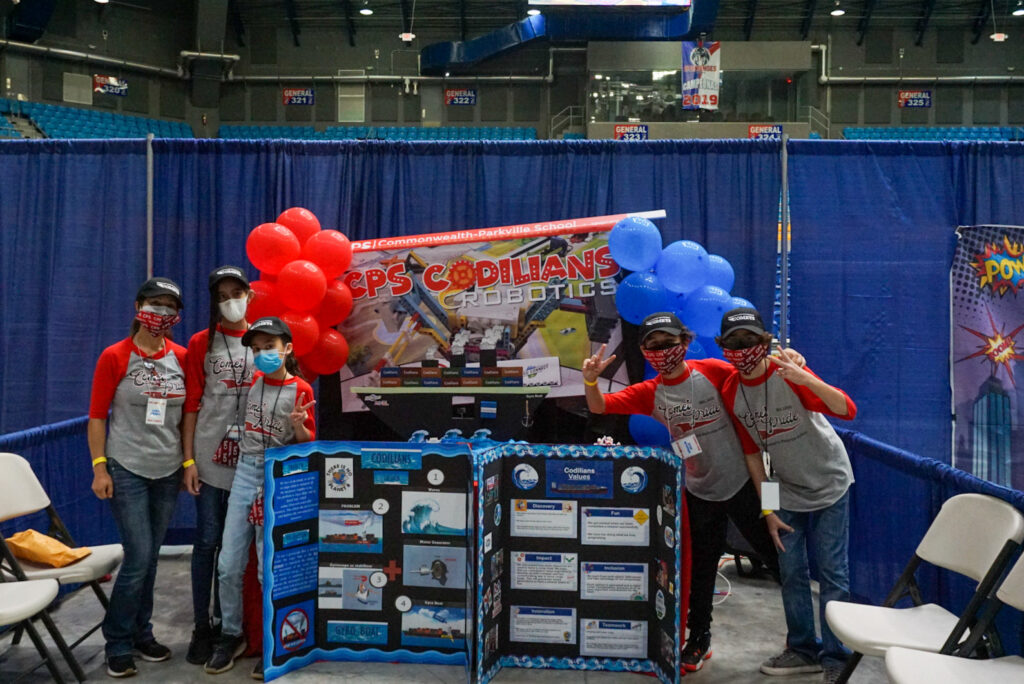
Innovation: The innovative part of our proposal is that the gyroscope that the cargo boats already have, be used in a double function: as a stabilizer for the cargo boat, and as the main element for the generation of electricity from clean energy such as the movement of the waves in the ocean. We use the discovery value as well because we learned how wave energy, a gyroscope, and a generator work together to generate electricity. We applied these discoveries to innovate the idea of the use that can be given to a gyroscope in a cargo ship. This idea can help to change the world.
Do you want your school or robotics team to have the opportunity to represent our island? Registration is now open for the new season of the FIRST LEGO League Challenge! Sign up today: https://firstroboticspr.org/inscripcionesfll/

